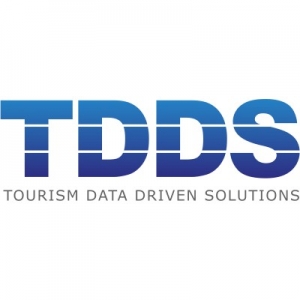In December 2019, the European Commission presented the European Green Deal, which aims to make Europe climate neutral by 2050.
In Spain, in February 2020, the Secretary of State for Tourism (SETUR), through its Subdirectorate General for Tourism Development and Sustainability, initiated a draft for the idea of a Program of Plans for Tourism Sustainability in Destinations. This Program was carried out with the participation of the Autonomous Communities and the Spanish Federation of Municipalities and Provinces (FEMP).
All of this means that destinations and companies must already be working on projects that look towards sustainability in its four aspects: economic, environmental, social and cultural.
It is well known that Spain evolves its tourism model towards the Smart Tourist Destination model, which is aligned with the Sustainable Development Goals of the 2030 Agenda. However, on many occasions, we do not know where to start
The good news is that there is a tool designed and approved by SETUR that helps us achieve this goal. This is the Program “Plans for Sustainable Tourism in Destinations”.
“The Tourism Sustainability Plans in Destinations that are executed in Spain during the next three years will have an economic endowment of 1,800 million euros”, according to the Secretary of State for Tourism, Fernando Valdés. (Source: Hosteltur)
Specifically, in 2020, in Spain 25 tourism sustainability plans were approved with an investment of 59 million euros. These tourism sustainability plans are designed to achieve, mainly, three objectives:
- Promote and support the reconversion of the most mature tourist destinations, orienting their management to the “smart tourist destination” model.
- Favor the development of rural and inland destinations.
- Support management entities by co-financing these plans.
And how to present a Tourism Sustainability Plan for your destination? As indicated in the document “Program of Sustainable Tourism Plans in Destinations” published by the FEMP:
-
The local management entity presents a proposal for a Tourism Sustainability Plan to its Autonomous Community.

Pic: Gerd Altmann
-
The Autonomous Community evaluates and prioritizes the different proposals received and those that are approved are sent to SETUR.
- SETUR and FEMP evaluate shortlisted plans.
- If your Plan is approved, in each of the years of validity of the Program you will receive the transfer to apply it through 3-year 3-band agreements (Local Entity, Autonomous Community and SETUR).
In the case of Ceuta and Melilla, the agreements are established for two years and two bands.
Finally, the Tourism Sector Commission approves the plans presented and the Sector Conference ratifies them.
In relation to the content of the Tourism Sustainability Plans, it varies according to the type of destination. In this sense, there are two types of Plans:
<Tourism Sustainability Plans for pioneering destinations.
<Tourism Sustainability Plans for rural or inland destinations.
Likewise, to know more about the actions necessary for the elaboration of these plans, below, we indicate some of them:
-
Generation of spaces dedicated to communication and awareness of residents and tourists.
-
Activation of tourist contribution mechanisms to the sustainability of destinations and companies.
-
Reconversion of public areas and facilities.
-
Beautification of historic centers and signage of resources, products and destinations.
-
Preservation and recovery of cultural heritage.
-
Improvement of the management of public facilities for tourist services and enhancement of natural resources.
-
Encourage the idea of a type of restoration closely linked to the territory and the environment.
-
Creation of tourism product that values the local.
-
Training in sustainability, implementation of quality systems, environmental systems for destinations and companies, and safety and hygiene protocols.
-
Incorporation of new technologies to better understand the behavior of tourist demand (mainly focused on these moments of crisis) and to interact with tourists.
-
Management of cargo capacity and redirection of tourist flows.
-
Creation of sustainable mobility projects. Communication, marketing and commercialization actions in which the sustainable component is a differentiating variable that adds value and is recognized by the demand.
In short, as we see it from TDDS, the Sustainability Plans are one more tool that helps us to be competitive, efficient and to be able to demonstrate that the tourist activity respects social criteria, (inclusion, gender equality, quality of life of the resident , etc.), environmental criteria (carbon neutral, low environmental impact, measurement and control of indicators, etc.) and governance criteria (efficient “data driven” management, generating employment and wealth, etc.).




Leave a Reply
Want to join the discussion?Feel free to contribute!